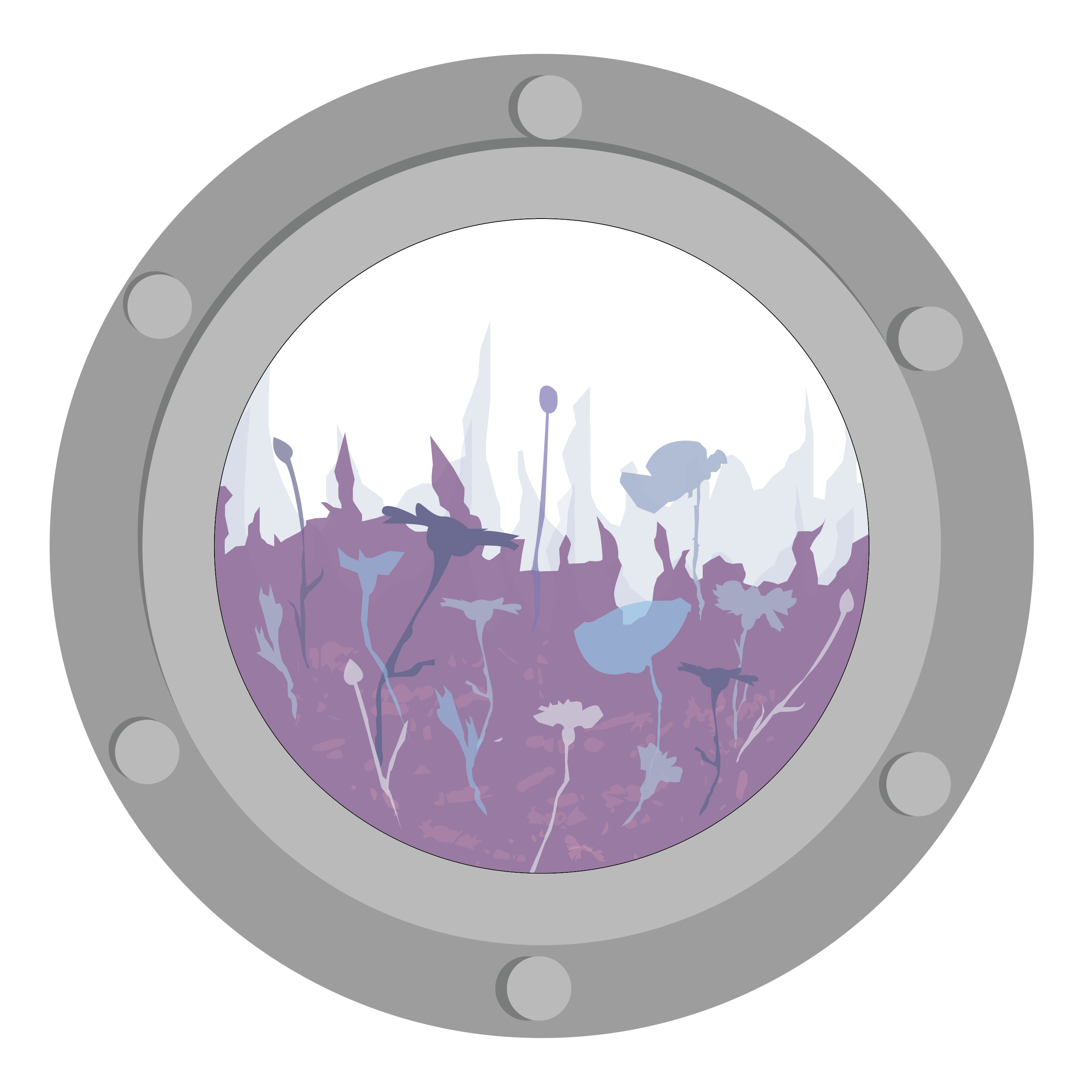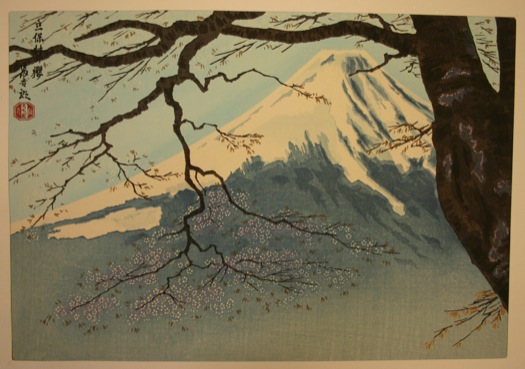
After getting feedback from the class, I decided to do more research on the kinds of landscapes that could inspire me to create new forms of therapeutic art.
I turned to Japanese woodblock prints, both traditional (e.g. Hokusai) and modern as I felt that the clean shapes and natural forms depicted in the prints suited the style of my work.
While both styles of Japanese woodblock prints often derived inspiration and subject matter from scenes in nature, he more modern woodblock print works were even more simplistic in style than the traditional ones and often reduced the landscape into simple silhouettes.
There were also a lot of overlapping shapes and colours to create texture. Hence, emulating that, I created my piece based on the idea of depicting one of the 4 seasons, spring.
For this piece, I chose to depict spring as I wanted to explore a series based on the 4 seasons, and I felt that spring fitted the purple colour scheme the most. I played around with the various opacities and colour combinations to create variation in the work while still maintaining the clean cut shapes similar to the style of the woodblock prints.
I also explored an alternative composition (Summer) to explore the possibility of developing the format of the work into a series.






















